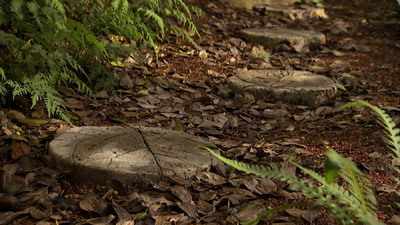- MENU
- HOME
- SEARCH
- WORLD
- MAIN
- AFRICA
- ASIA
- BALKANS
- EUROPE
- LATIN AMERICA
- MIDDLE EAST
- United Kingdom
- United States
- Argentina
- Australia
- Austria
- Benelux
- Brazil
- Canada
- China
- France
- Germany
- Greece
- Hungary
- India
- Indonesia
- Ireland
- Israel
- Italy
- Japan
- Korea
- Mexico
- New Zealand
- Pakistan
- Philippines
- Poland
- Russia
- South Africa
- Spain
- Taiwan
- Turkey
- USA
- BUSINESS
- WEALTH
- STOCKS
- TECH
- HEALTH
- LIFESTYLE
- ENTERTAINMENT
- SPORTS
- RSS
- iHaveNet.com: Home & Garden
Sean Conway

The rising cost of conventional building materials and the expense of transporting them has brought a renewed focus to alternative methods of construction.
One of the more interesting examples is the home of artisan builder and master craftsman Matt Rogers. Located in a quiet suburban neighborhood in Modesto, Calif., this unique and beautiful home is made almost entirely out of concrete.
"Cultivating Life" recently paid Matt a visit, and I was amazed how my perception of concrete changed after seeing what Matt has done with it. Matt has been working with concrete for more than 20 years and has developed techniques and finishing practices that allowed him to create elements and surfaces in his home that look very different from traditional grey concrete seen in parking garages and bridge supports.
He has built concrete kitchen counters, bathroom sinks, and fireplaces, and even added pigment to concrete to create walls with the color and texture of tanned leather. Matt has also mixed materials such as recycled glass or small fossils into the concrete, which when polished create a surface with depth and interest. In other treatments, he has created surfaces with a look closer to the interior of a well-aged wine barrel.
You can take advantage of concrete's many wonderful qualities, too, even if you don't go as far as building a home out of it.
Jonathan Wright from Chanticleer Gardens in Wayne, Pa., was recently my guest on "Cultivating Life" and demonstrated how concrete can be incorporated into the garden in a practical yet beautiful application.
Using large leaves harvested from my garden, Jonathan showed me how to make leaf-imprinted steppingstones using inexpensive materials.
He began by mixing 6 parts sand with 3 parts Portland cement. In a separate container, he mixed buff-colored pigment to about a quart of water and then added in a handful of shredded fiberglass. The fiberglass, Jonathan explained, would provide strength to the cement when it dried.
Next the liquid slurry was incorporated into the sand and cement mixture. He added the water slowly to make sure the consistency did not get runnier than a thick smoothie.
To make the concrete mold, Jonathan brought along an ordinary tubular cement form purchased from a building materials store. He stood the tubular cement form upright on a piece of plywood and then placed a handful of moistened sand on the bottom of the form. He then gently placed a large leaf collected from my garden over the sand with the leaf's surface facing up.
Jonathan then carefully scooped the cement mixture into the mold while tapping on the sides to help release any air bubbles that might have formed within the steppingstone.
The mold was allowed to dry for several days. When the steppingstone was removed from the tube mold, the leaf peeled off easily, revealing its impression in the hardened cement.
Not only was the steppingstone attractive and unique, it was also inexpensive to make. With the wide range of colored pigments available, and the variety of garden leaves to choose from, the possibilities for designing your own steppingstones are almost limitless.
Avalable at Amazon.com:
Sean Conway's Cultivating Life: 125 Projects for Backyard Living
Ranches: Design Ideas for Renovating, Remodeling, and Building New
AUTOS | HOBBIES | EDUCATION | FAMILY | FASHION | FOOD & RECIPES | HOME DECOR | RELATIONSHIPS | PARENTING | PETS | TRAVEL | WOMEN
Beautify Your Garden with Concrete - Not as Crazy as It Sounds
Article: Copyright © Tribune Media Services